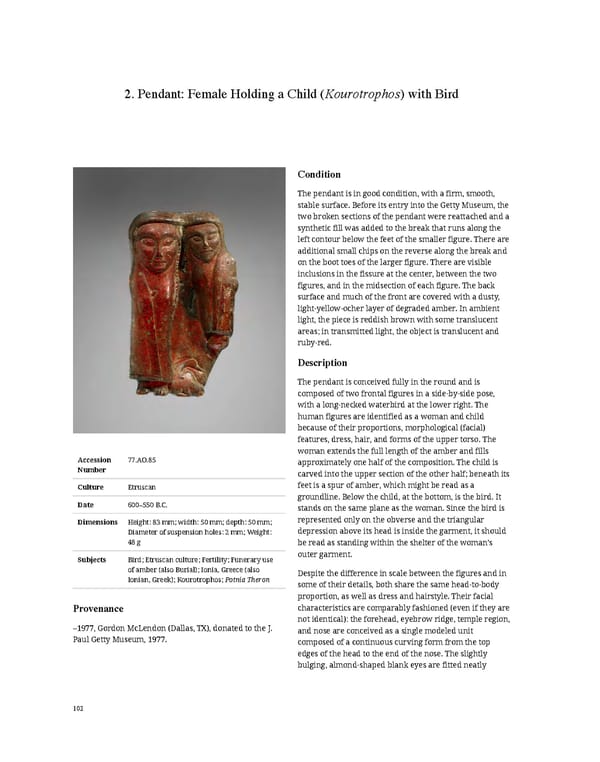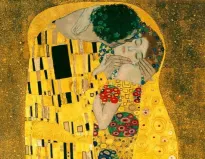2. Pendant: Female Holding a Child (Kourotrophos) with Bird Condition The pendant is in good condition, with a firm, smooth, stable surface. Before its entry into the Getty Museum, the two broken sections of the pendant were reattached and a synthetic fill was added to the break that runs along the left contour below the feet of the smaller figure. There are additional small chips on the reverse along the break and on the boot toes of the larger figure. There are visible inclusions in the fissure at the center, between the two figures, and in the midsection of each figure. The back surface and much of the front are covered with a dusty, light-yellow-ocher layer of degraded amber. In ambient light, the piece is reddish brown with some translucent areas; in transmitted light, the object is translucent and ruby-red. Description The pendant is conceived fully in the round and is composed of two frontal figures in a side-by-side pose, with a long-necked waterbird at the lower right. The human figures are identified as a woman and child because of their proportions, morphological (facial) features, dress, hair, and forms of the upper torso. The woman extends the full length of the amber and fills Accession 77.AO.85 approximately one half of the composition. The child is Number carved into the upper section of the other half; beneath its Culture Etruscan feet is a spur of amber, which might be read as a groundline. Below the child, at the bottom, is the bird. It Date 600–550 B.C. stands on the same plane as the woman. Since the bird is Dimensions Height: 83 mm; width: 50 mm; depth: 50 mm; represented only on the obverse and the triangular Diameter of suspension holes: 2 mm; Weight: depression above its head is inside the garment, it should 48 g be read as standing within the shelter of the woman’s Subjects Bird; Etruscan culture; Fertility; Funerary use outer garment. of amber (also Burial); Ionia, Greece (also Despite the difference in scale between the figures and in Ionian, Greek); Kourotrophos; Potnia Theron some of their details, both share the same head-to-body proportion, as well as dress and hairstyle. Their facial Provenance characteristics are comparably fashioned (even if they are not identical): the forehead, eyebrow ridge, temple region, –1977, Gordon McLendon (Dallas, TX), donated to the J. and nose are conceived as a single modeled unit Paul Getty Museum, 1977. composed of a continuous curving form from the top edges of the head to the end of the nose. The slightly bulging, almond-shaped blank eyes are fitted neatly 102
 Ancient Carved Ambers in the J. Paul Getty Museum Page 111 Page 113
Ancient Carved Ambers in the J. Paul Getty Museum Page 111 Page 113
